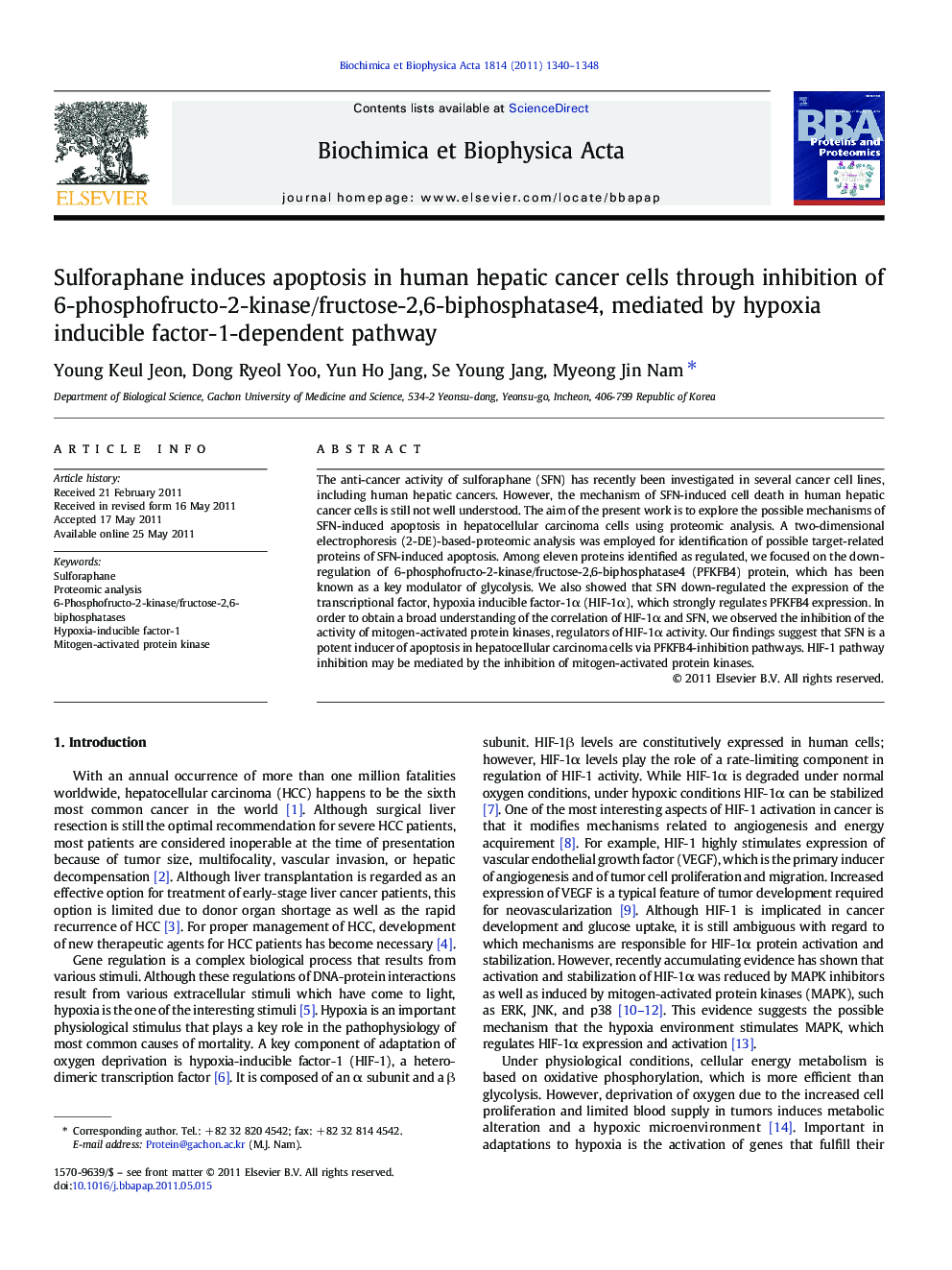| Article ID | Journal | Published Year | Pages | File Type |
|---|---|---|---|---|
| 1178749 | Biochimica et Biophysica Acta (BBA) - Proteins and Proteomics | 2011 | 9 Pages |
The anti-cancer activity of sulforaphane (SFN) has recently been investigated in several cancer cell lines, including human hepatic cancers. However, the mechanism of SFN-induced cell death in human hepatic cancer cells is still not well understood. The aim of the present work is to explore the possible mechanisms of SFN-induced apoptosis in hepatocellular carcinoma cells using proteomic analysis. A two-dimensional electrophoresis (2-DE)-based-proteomic analysis was employed for identification of possible target-related proteins of SFN-induced apoptosis. Among eleven proteins identified as regulated, we focused on the down-regulation of 6-phosphofructo-2-kinase/fructose-2,6-biphosphatase4 (PFKFB4) protein, which has been known as a key modulator of glycolysis. We also showed that SFN down-regulated the expression of the transcriptional factor, hypoxia inducible factor-1α (HIF-1α), which strongly regulates PFKFB4 expression. In order to obtain a broad understanding of the correlation of HIF-1α and SFN, we observed the inhibition of the activity of mitogen-activated protein kinases, regulators of HIF-1α activity. Our findings suggest that SFN is a potent inducer of apoptosis in hepatocellular carcinoma cells via PFKFB4-inhibition pathways. HIF-1 pathway inhibition may be mediated by the inhibition of mitogen-activated protein kinases.
Research highlights► We investigated an anti-cancer activity of sulforaphane (SFN) and its mechanisms. ► SFN induced apoptosis on huh-7 cells in dose- and time-dependent manners. ► We identified proteins related to SFN-induced apoptosis using proteomic analysis. ► The apoptotic mechanism might involve modulation of PFKFB-associated glycolysis. ► PFKFB-associated glycolysis was regulated through a HIF-1α-dependent pathway.
